- Home
- Anthony Trollope
The Warden Page 2
The Warden Read online
Page 2
II
In his Autobiography Trollope tells how he had been struck by ‘two opposite evils’:
The first evil was the possession by the Church of certain funds and endowments which had been intended for charitable purposes, but which had been allowed to become incomes for idle Church dignitaries. There had been more than one such case brought to public notice at the time, in which there seemed to have been an egregious malversation of charitable purposes. The second evil was its very opposite. Though I had been much struck by the injustice above described, I had also often been angered by the undeserved severity of the newspapers towards the recipients of such incomes, who could hardly be considered to be the chief sinners in the matter. (Chapter 5)
Two of these scandals are mentioned in the second chapter of The Warden: St Cross Hospital in Winchester and ‘the struggles of Mr Whiston, at Rochester’ (p. 7). Of the two, the St Cross case is closer to the situation in the novel.
Like Hiram’s Hospital, St Cross was an almshouse for the elderly poor founded in the twelfth century by one Henry de Blois; its Master, or Warden, was Francis North (1773–1861), nephew of George III’s Prime Minister, who became Earl of Guilford in 1827. In the fine old pre-reform traditions of clerical nepotism, North had been appointed to the Mastership by his father, the Bishop of Winchester, in 1808, and he held it in plurality with the Rectory of Old Alresford and a rich parish in Southampton, which brought him a combined annual income of nearly £3,500. He drew another £1,000 a year from a prebendal stall in Winchester Cathedral, and some £2,000 to £3,000 a year from St Cross. Despite his wealth and pluralism, however, the Earl of Guilford seems to have been reasonably responsible in his management of the Hospital. On becoming Master he increased the salaries of the steward and chaplain; he saw to it that the old men were well fed and housed, paid their doctor’s bills, and like Mr Harding added to their allowance. All this cost him about £1,000 a year. What made St Cross a scandal in the 1840s was not so much the Master’s conduct of the Hospital, which by the standards of the day was hardly outrageous, as his conduct of the properties belonging to the Hospital, which he was leasing on fines (i.e. granting long leases at low rents in exchange for a capital sum, or fine) and pocketing the proceeds. Thousands of pounds which should have gone to expand the charitable work of the Hospital were being misappropriated by its clerical Master. The abuse was taken up by the newspapers, a resolution was passed in Parliament, and the St Cross case was referred to the Court of Chancery in 1849. Nearly four years later the Master of the Rolls found against the Earl of Guilford. He was prevented from taking future fines and made to repay those taken since 1849, the Master’s salary was reduced to £250 and his clerical duties re-established, and the mangement of the Hospital was transferred to a board of trustees.6
There are several features of the St Cross case which may have struck Trollope and influenced the conception of The Warden: the Winchester setting with its reminder that he, like Lord Guilford, had suffered humiliation there; the advanced age of the Master and the relative conscientiousness with which he had looked after the old men in his charge; the activities of a reformer (in this case a retired clergyman) and the newspapers in bringing the abuse to light; and most suggestive of all perhaps, the dramatic potential in the figure of a clergyman grown old in the comfortable and corrupt ways of the eighteenth-century Church, blinking in the sudden light of reform and publicity. The case of the Rev. Robert Whiston at Rochester is less immediately relevant to the action of The Warden. Whiston was the energetic and successful Headmaster of the Cathedral Grammar School, who had fallen foul of the dean and chapter by his efforts to persuade them to increase the value of the allowances which, by cathedral statute, they were required to pay for the maintenance of four Exhibitioners at university and twenty cathedral scholars, and which had been little changed for centuries. In 1849 he published a pamphlet on Cathedral Trusts and Their Fulfilment, which not only set out his complaint against the Rochester Chapter but pointed the finger at other cathedrals where the clergy had enriched themselves at the expense of the charities they were bound by statute to maintain. The Chapter promptly dismissed him, but Whiston bravely took his case to law, where after the usual slow progress through the courts he won a rather grudging verdict in his favour and was reinstated.
It has been suggested that Whiston was a John Bold, but this can only be true in so far as he brought into the open the mismanagement of cathedral revenues. Trollope’s point about Bold is that he sets out to reform an institution in which he has no personal stake, and of whose true workings he is largely ignorant. The same cannot be said of Whiston: he had a direct, professional interest in improving the maintenance provided for his pupils, and his campaign on their behalf was entirely honourable, albeit intemperately conducted at times. There is, however, one aspect of his case that may have struck Trollope: Whiston’s faith in, and resort to, public opinion and the power of the press. After winning his case in 1852 he sent a letter of thanks to the various newspapers that had supported him, including The Times, in which he wrote: ‘Without the support of the Press, in forming, guiding and reflecting the irresistible supremacy of public opinion, I might have indeed appealed in vain for even that measure of justice which I have at last obtained.’7 It is just such a faith in ‘the irresistible supremacy of public opinion’, when applied to an ancient institution like the Church, that The Warden sets out to question.
If only because they were widely discussed in the newspapers and are mentioned several times in the text, the St Cross and Whiston scandals must be considered the chief topicalities in the background of this highly topical novel. But there is another less well-known issue that may have counted for just as much in the genesis of The Warden, because it offers a particularly clear link between a scandal involving an elderly clergyman, an impetuous reformer, and The Times newspaper. According to T. H. S. Escott, Trollope’s friend and first biographer, the novelist told him that the first two Barsetshire novels ‘grew out of The Times correspondence columns during a dull season of the fifties. The letters raised and argued, for several days or weeks together, the controversial issue whether a beneficed clergyman could be justified in systematic absenteeism from the congregation for whose spiritual welfare he was responsible.’8 This correspondence has been tracked down by Carol H. Ganzel,9 and the issue at stake turns out to be not absenteeism but simony, the buying and selling of Church livings (although, as we shall see, there are reasons why Trollope should have recalled it as a dispute about absenteeism). The reformer was a Dorset clergyman, Sidney Godolphin Osborne, who like the fictional Bold was something of a busybody, taking up one ‘abuse’ after another, and a favoured correspondent with the editor of The Times, who published his letters and sometimes took up the issues they raised in leading articles. Moreover, he was known to Trollope, who had earlier written an article for the Examiner criticizing the views on Ireland which Osborne had expressed in a previous series of letters to The Times. In 1853 Osborne was concerned with a loophole in the Simony Law. At that time it was legal for the patron, or owner, of a clerical living to sell it to a clergyman only in prospect: he could sell the next presentation to the living, but not a vacant living. If the incumbent died before the living had been sold, another clergyman had to be instituted. There was therefore a temptation for a greedy patron to institute an old or dying man, on the likelihood of whose early death the next presentation could be sold profitably. In The Times of 28 July 1853 Osborne cited the case of a very ill man who had recently been presented to the living of St Ervan’s in Cornwall; he was said to be paralytic, and at his induction had to be helped down the aisle and fortified with wine, yet even so was unable to read through the Thirty-nine Articles. He never resided and shortly thereafter died. In a further letter published on 20 August, Osborne accused this clergyman of selling his infirmity for the brief enjoyment of an increased stipend.
Then in The Times of 1 September appeared a letter from one Alfred Cox, naming th
e clergyman in question as his relative, the Rev. John Pope Cox, and describing him as ‘so peculiarly mild, benevolent and amiable a person, that it seems impossible to conceive that through the whole of his life he could have ever found… anyone who could harbour an unkind thought about him’ (p. 10). Cox claimed that his relative had been neither ‘paralytic’ nor avaricious, that he had accepted the living in good faith, expecting to regain his health and reside at St Ervan’s; and he accused Osborne of using the columns of The Times ‘to harrow the feelings of the widow and relatives of his brother clergyman, by dragging his name before the public, and holding up his memory to public reprobation’ (p. 10). After two more letters from Osborne of a somewhat self-congratulatory kind, and another in support of him signed ‘Pro Bono Publico’, the correspondence closed.
There are several features of this case which make it a likely source for The Warden: the testimony of Escott, the fact that Osborne was known to, and possibly disliked by, Trollope, and the very striking contrast between the reformer’s public view of the abuse, and the private character and feelings of the clergyman and his family. That likelihood becomes a probability when we consider a fact which has never been pointed out before. The Times, Trollope’s Jupiter, took up the St Ervan’s case in a leading article. On 10 September 1853, the second leader magisterially endorsed Osborne’s view of the Rev. Cox (‘a paralytic, or as good as one’) and then turned the accusation against the Church, first mocking the bishops for their powerlessness to prevent the institution of a ‘paralytic’ –
The Bishop is only performing a scene in the splendid melodrama of the Church of England, and has no more to do with the personal qualifications of the man before him than if he and the man were a couple of scene-shifters elevated for five minutes into mitred abbots on the floor of Drury Lane. (p. 6)
– then questioning their utility (‘What need of such great men, such learned men, such well-paid men… Why twenty-six to do a purely mechanical act?’), and ending by pointing soberly to what The Times obviously saw as the real abuse, absenteeism:
The greatest scandals in the Church are those which are not only undeniable, but even confessed, not to say boasted. A man obtaining a living is instituted and inducted, read in, and then informs the Bishop that the house is too damp for him, or the church too spacious, or the parish too extensive; and he takes leave of his parish for ever; only drawing £500 a-year from it, and paying £100 to his curate… There is not an office under Government in which such conduct would be tolerated… (p. 6)
Here, clearly, is the link between the reformer, the accused clergyman and the pronouncements of the Jupiter which figures so largely in The Warden. And although the Rev. Cox is unlike Mr Harding in that he did not live to read the accusation against him, here is a similar contrast between the harsh and mocking publicity of the leading article and the private world of the individual (‘so peculiarly mild, benevolent and amiable a person’) to which Alfred Cox’s letter tried to draw attention. Furthermore, the leader in The Times makes it clear why Trollope, when he mentioned the correspondence to Escott, remembered it as a case of absenteeism.
If the long-running scandals of St Cross and Rochester provided the initial idea, then, and the visit to Salisbury (and the awakened recollection of Winchester) the setting, the trigger for the writing of the novel may well have been the St Ervan’s case and the leading article on it. Certainly this would account for the particular intensity of Trollope’s attack on the Jupiter. The Times had pronounced on clerical scandals before, of course, but in 1853 – the year Trollope was writing The Warden – it was more than usually wide-ranging and scathing in its criticism of the abuse of privilege in the Church: the reference in the St Ervan’s leader to ‘the spendid melodrama of the Church of England’ and the mockery of the bishops are fairly typical. On 21 and 27 June, and again on 10 August 1853, Times leaders mounted an attack on the Bishop of Salisbury, accusing him of misappropriating the revenues of his see by consistently taking an annual salary some £1,700 higher than that allowed by the Ecclesiastical Commissioners, and computing the excess payment over a fourteen-year period as £24,318. The paper was wholeheartedly in favour of the Charitable Trusts Act of 1853, which at long last gave the Charity Commissioners power to adapt old charities to modern uses (and which, incidentally, became law the day after judgement was given in the St Cross case), and was equally enthusiastic about the Marquis of Blandford’s proposal in June of that year to introduce an Episcopal and Capitular Property Bill, to ensure a more equitable distribution of the Church’s income. In a penetrating editorial, The Times described the Church of England as ‘the most paradoxical body in the world. It is, at the same time, the richest and the poorest; the most popular and the most exclusive’, and to illustrate the point contrasted its appearance in a cathedral town with its virtual absence in the new manufacturing cities. The former is summoned up in words that could describe Mr Harding’s situation at the start of The Warden:
The man whose lot is cast in some one of its pleasant places, and whose curiosity does not betray him beyond the walls of his paradise, may go through life with a very delightful and dreamy idea of the Establishment. Its princely bishops, its magnificent cathedrals, its hospitable canons and zealous archdeacons, its comfortable incumbents, its parochial system, its village churches and devout congregations, all make up a whole which it wants but little poetry to convert into a very respectable anticipation of the heavenly Jerusalem. (22 June 1853, p. 4)
But the situation in a swollen manufacturing town was very different, where the population had grown out of all proportion to the religious provision: ‘What avails it to the myriads that spring up, self-sown, as it were, over these spiritual wastes, that there are cathedrals, bishops, prebendaries, and some thousands of learned, otiose, and well-beneficed clergy?’
This is the most perceptive of all The Times’s comments on the Church in 1853, and whether Trollope read it or not he can hardly have been unaware of the problem to which it drew attention. The real and inescapable challenge which the Established Church faced in the middle of the nineteenth century was the need to adapt to the new social conditions of an industrialized society. As the same leader said, ‘no system can be really effective which has not the power of continual adjustment, according to the change of circumstances’. This, I would suggest, is the essential context in which The Warden should be read. The particular clerical scandals which inspired Trollope’s initial conception are only aspects of a larger problem which is not mentioned in the novel, although it informs the presentation of character and setting at many points. The Warden paints its picture of the charming ways of the provincial and country clergy in the shadow of the knowledge that these ways are ceasing to be relevant to the needs of Victorian England. It is this knowledge which gives the novel its slight air of elegy, of special pleading for a losing cause. Trollope could not defend clerical privilege, and Archdeacon Grantly is there as a comic reminder of the impossibility of doing so. But he could and did attack reformers, in John Bold, Tom Towers, and in the writings of Dr Pessimist Anticant and Mr Popular Sentiment. No doubt the anti-reformism of The Warden is partly a defence of privilege and the old ways by the back door, but there is more to it than that. Trollope’s originality lay in perceiving the moral imperialism of the reforming temper and its tendency to lose a sense of the complexities of the individual case – and therefore of the supreme value of individual integrity and conscience – in the simplifying pursuit of an abstract justice. It is a perception which clearly owed a good deal to his reflection upon these topical matters discussed in The Times.
III
The fate of the private life in an extrovert age of great public achievement, I have suggested, is one of the principal concerns of Victorian literature, and in few works of the period can the sense of the private life seem quite so embattled as it is in the early chapters of The Warden. Our first sight of Hiram’s Hospital in its idyllic situation on the riverbank is from the bridge on
the London road – appropriately, for it is from London that copies of the Jupiter will come to threaten Mr Harding’s ‘retreat’ (p. 5), and it is to London that he will go in the second half of the novel to see Sir Abraham Haphazard. The ‘slight iron screen’ which separates the rest of the hospital from ‘the Elysium of Mr Harding’s dwelling’ (p. 5) is a deftly symbolic touch, suggesting at once the paradise within and its fragility, the slightness of the defence it will be able to put up against challenge from without. The developing symbolic resonance of the warden’s garden hardly needs stressing, as we see it first from the London road, then through John Bold’s eyes at the start of Chapter 3, then metaphorically in Mr Harding’s thoughts as he envisages the disruption of his peace in terms of the destruction of his retreat:
It was so hard that the pleasant waters of his little stream should be disturbed and muddied by rough hands; that his quiet paths should be made a battlefield; that the unobtrusive corner of the world which had been allotted to him, as though by Providence, should be invaded and desecrated, and all within it made miserable and unsound, (p. 45)
– a fear that is actualized at the end of the novel when we learn that ‘The warden’s garden is a wretched wilderness, the drive and paths are covered with weeds, the flowerbeds are bare, and the unshorn lawn is now a mass of long damp grass and unwholesome moss’ (p. 183). The ruined garden is charged with a sense of irreparable loss, although we should not for that reason assume that Mr Harding’s story is entirely one of loss. It is in fact a moral victory, although not an easy or a painless one.

 Doctor Thorne
Doctor Thorne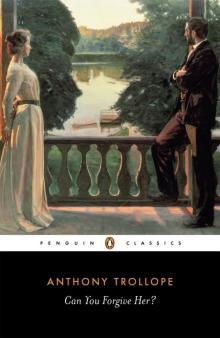 Can You Forgive Her?
Can You Forgive Her?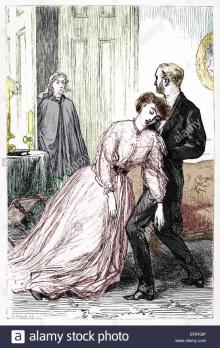 The Last Chronicle of Barset
The Last Chronicle of Barset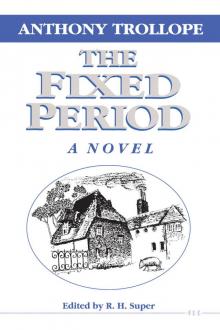 The Fixed Period
The Fixed Period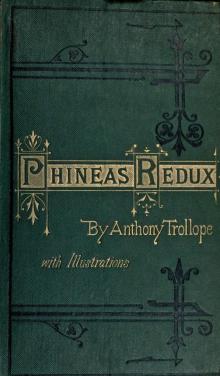 Phineas Redux
Phineas Redux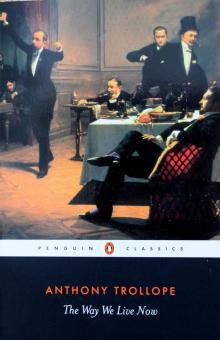 The Way We Live Now
The Way We Live Now Castle Richmond
Castle Richmond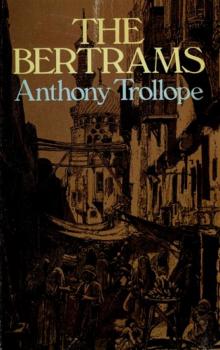 The Bertrams
The Bertrams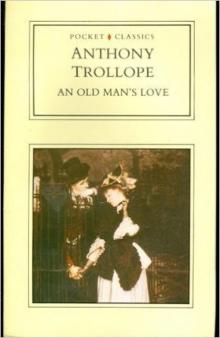 An Old Man's Love
An Old Man's Love The Belton Estate
The Belton Estate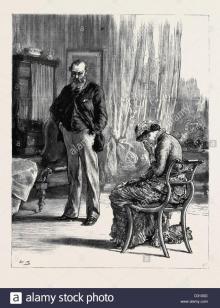 Marion Fay: A Novel
Marion Fay: A Novel The Claverings
The Claverings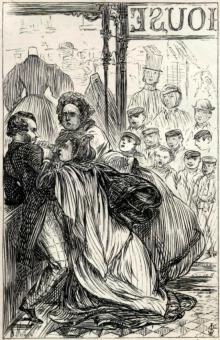 The Struggles of Brown, Jones, and Robinson
The Struggles of Brown, Jones, and Robinson Nina Balatka
Nina Balatka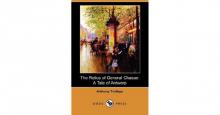 The Relics of General Chasse: A Tale of Antwerp
The Relics of General Chasse: A Tale of Antwerp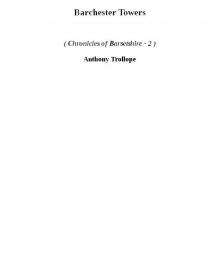 Barchester Towers cob-2
Barchester Towers cob-2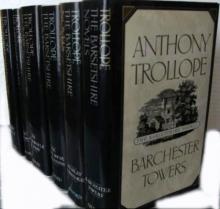 The Chronicles of Barsetshire
The Chronicles of Barsetshire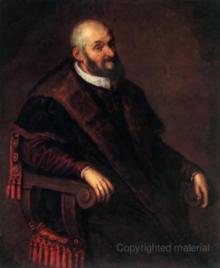 The Warden cob-1
The Warden cob-1 Framley Parsonage
Framley Parsonage Christmas at Thompson Hall
Christmas at Thompson Hall The Warden
The Warden The Palliser Novels
The Palliser Novels The Small House at Allington
The Small House at Allington Barchester Towers
Barchester Towers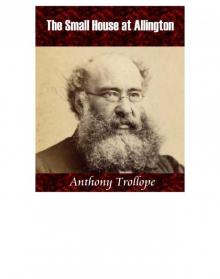 The Small House at Allington cob-5
The Small House at Allington cob-5 The Duke's Children
The Duke's Children Phineas Finn, the Irish Member
Phineas Finn, the Irish Member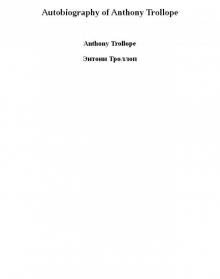 Autobiography of Anthony Trollope
Autobiography of Anthony Trollope